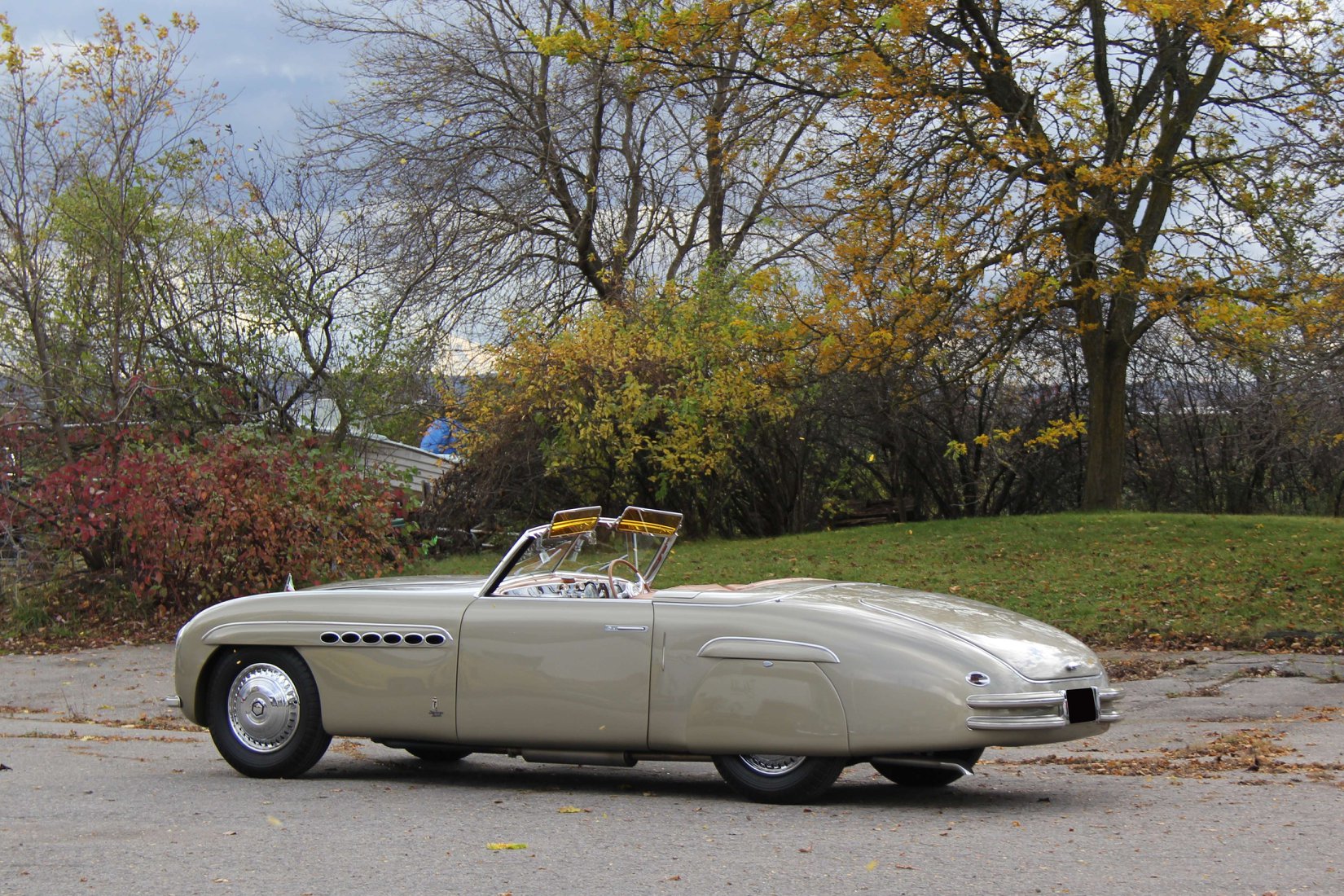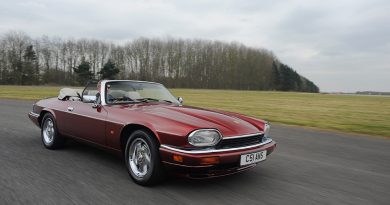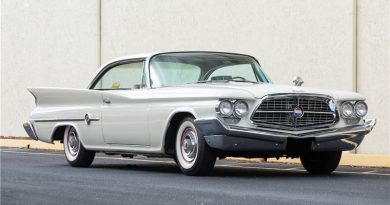1942 Alfa Romeo 6C 2500 Cabriolet Speciale
The Alfa Romeo 6C name was used on road, race, and sports cars produced between 1927 and 1954 by Alfa Romeo; the “6C” name refers to the six cylinders of the car’s straight-six engine. Bodies for these cars were made by coachbuilders such as James Young, Zagato, Touring Superleggera, Castagna, and Pinin Farina. Beginning in 1933 there was also a 6C version with an Alfa factory body, built in Portello. In the early 1920s Vittorio Jano received a commission to create a lightweight, high performance vehicle to replace the Giuseppe Merosi designed RL and RM models.

The 6C was a long-lasting Alfa Romeo model, having been built in a variety of different series between 1927 and 1954. What we have here is a 6C 2500, which were built between 1938 and 1952. It was the ultimate 6C model as the 6C 3000 never really went beyond the prototype stage.
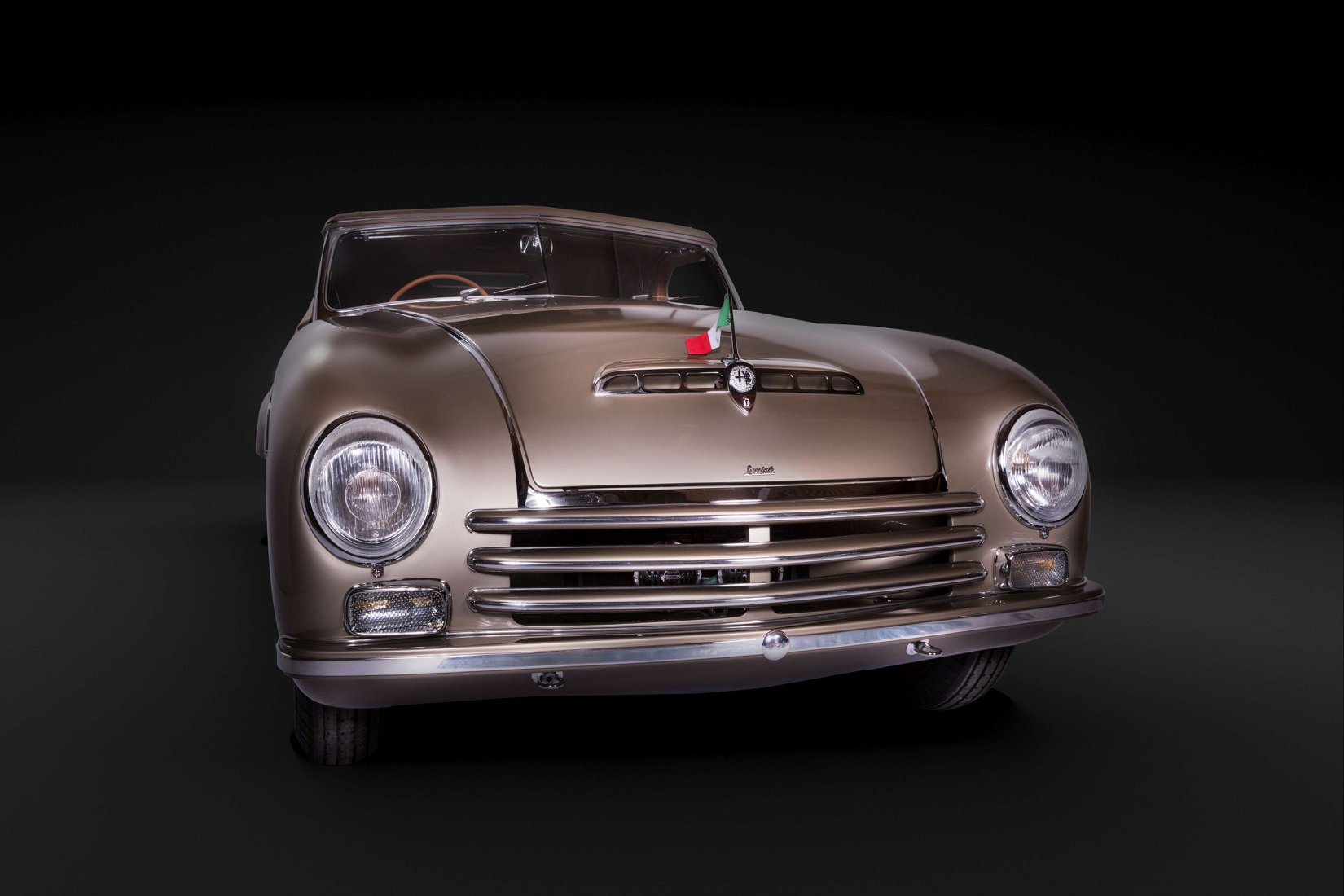
Legendary at the house of Pininfarina as the famous lost ‘anti-Salon Car’, this 1942, 6C2500 Alfa was purchased and bodied in 1946 by Pininfarina as the 1946 Paris Show Car. Flamboyant in the extreme, its extensive use of lucite and chrome combined with a coachwork design far ahead of its time, it foreshadows the automotive style of the mid-1950’s and clearly stood out amid the drab postwar design in 1946 post war Europe. However, France spitefully banned autos from former enemies Italy and Germany from the 1946 ‘Salon de l’Automoible.’ Irate at hearing the news, Pinin drove the Alfa overnight from Lausanne to Paris where he parked it directly in front of the Grand Palais Salon on the opening day, and called the press, staging his own ‘Anti Salon.’ The car later went on to win the best-in-show at the 1947 Concours d’Elegance of Monte Carlo. Pinin then re-purchased and drove the Alfa as his personal vehicle and then sold it to Austin where it was used as a design mule and personal car of Austin’s managing directory, George Harriman. Bob Koto who led the Austin design team for Loewy and Associates, purchased the car and brought it to America. Damaged slightly in transit, Koto took the car to Loewy’s workshop to repair it, and Raymond Loewy insisted on a color change to bottle green. Since then, it has been returned to its original nitro-cellulose based metallic champagne paint color.
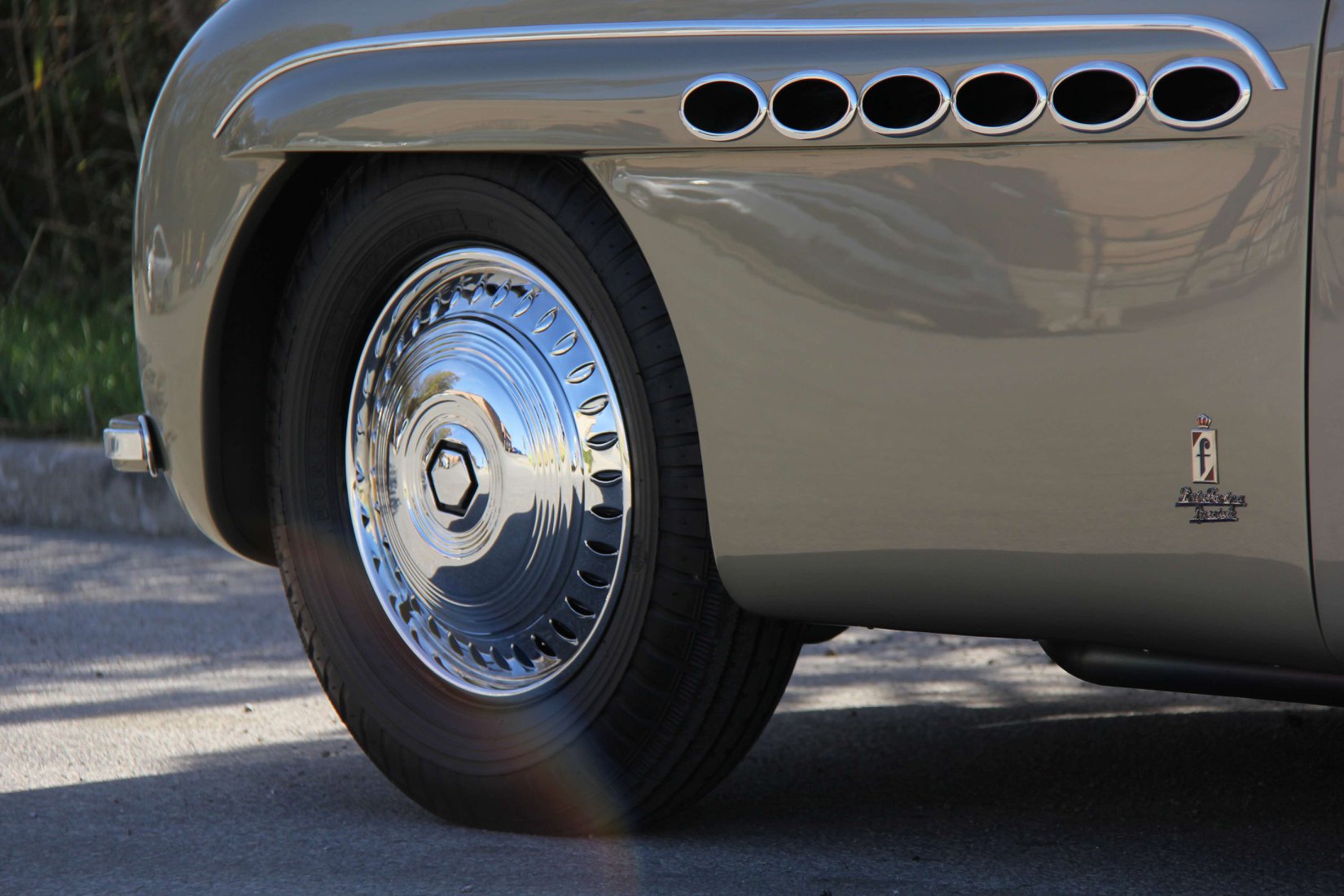 This 6C 2500, which is powered by a 2.4-liter straight-six making 90 horsepower, was delivered as a bare chassis to Pinin Farina in 1942 (along with 13 other chassis). The first owner, a wealthy Milanese woman, had Pinin Farina body it for the first time in 1946. The body was an instant hit, winning awards at car shows upon introduction.
This 6C 2500, which is powered by a 2.4-liter straight-six making 90 horsepower, was delivered as a bare chassis to Pinin Farina in 1942 (along with 13 other chassis). The first owner, a wealthy Milanese woman, had Pinin Farina body it for the first time in 1946. The body was an instant hit, winning awards at car shows upon introduction.

The interior is in excellent condition, with excellent leather upholstery showing only the lightest of wear. The wool carpets are in excellent shape and were installed to high standards, and the dashboard, switches, and instruments are excellent. The top and top boot are both in excellent shape.

This unique masterpiece has a form that was completely avant-garde for the 1940s. There are a few nods to the United States (with, for example, the ‘porthole’ inlets on the front wings), and with enclosed ” ponton ” styling that was well ahead of its time. A truly extraordinary automobile, this is an important milestone in the history of automobile design, fitted to a noble mechanical base. This car will attract attention wherever it goes, and give its owner the satisfaction of being part of a unique story, while sitting behind the wheel of an automobile like no other.

